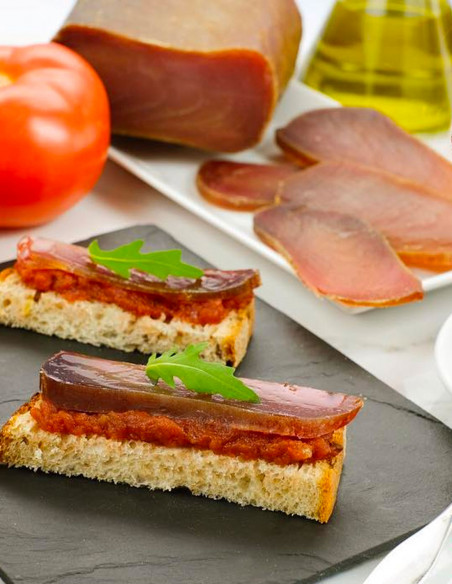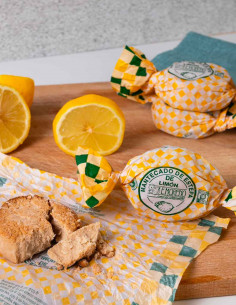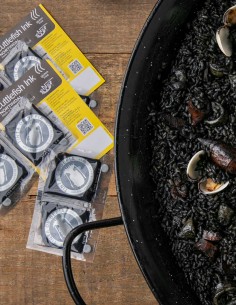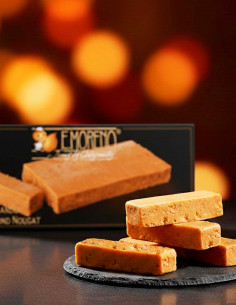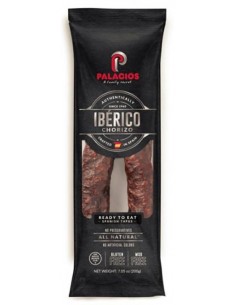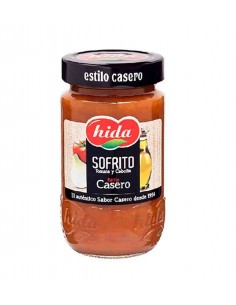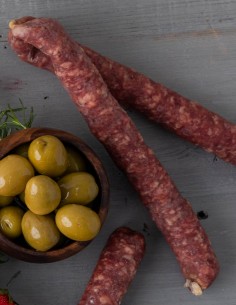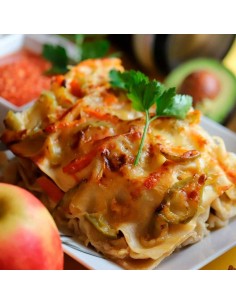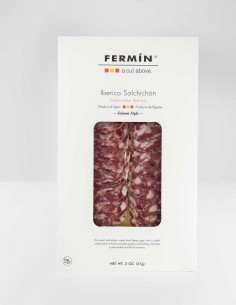- New
The mojama is undoubtedly one of the most recognizable products of Barbate, and is also one of the most delicious preparations that can be made with tuna. In Herpac we have been defending its uniqueness, its qualities and its excellence for many years, which prompted us to lead, first, the fight for the creation of the Protected Geographical Indication "Mojama de Barbate", and later, the Regulatory Council of the Protected Geographical Indications "Mojama de Barbate".
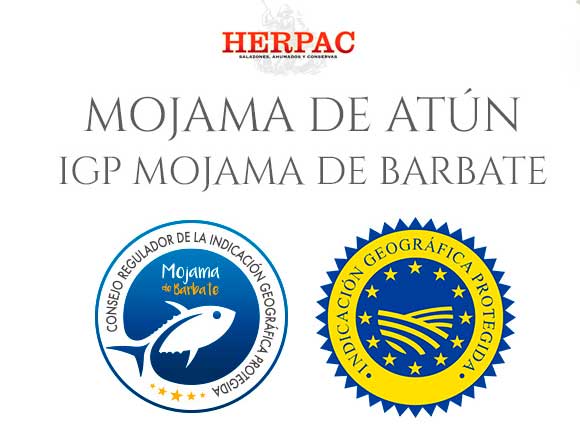 Mojama - Yellowfin Tuna Loins (8.8oz-10.6oz)
Mojama - Yellowfin Tuna Loins (8.8oz-10.6oz)
MOJAMA
What is the origin of mojama?Mojama has its origin during the time when the Arab culture was located in Andalusia (Al-Andalus), as a result of the fusion of the almadraba technique (tuna fishing technique) and a preservation method inherited from the Phoenicians and Romans: salting, which allows preserving the tuna meat without the need of refrigeration.
What is mojama?
Mojama is a type of salting, which can be made with two types of tuna: what we know as bluefin tuna (thunnus thynnus) and the so-called yellowfin tuna or light tuna (thunnus albacares).
What part of the fish is mojama?
To elaborate mojama, noble parts of the tuna are used, such as the loins of the landings and underbelly.
How is mojama made?
Once the tuna loins are clean, they are pressed with salt. In this way, the pieces lose a large amount of water and are cured. This process is known as salting and is 100% natural and artisanal.
What are the different types of mojama?
We can say that there are three different types of mojama, according to their quality and they are the following:
First Category Mojama: it is elaborated using the internal area of the loin. Mojama de Categoría Extra: the piece with which it is elaborated is located in the center of the loin, with a much finer texture. This represents the highest quality mojama.
What is the difference between roe and mojama?
Although both products are used to make exquisite salted fish, the difference between mojama and roe is clear: mojama comes from the tuna loins, while roe is found only in female tuna. In addition, we can use roe from other fish to prepare salted fish. However, for mojama we only use tuna.
Where is mojama typical from?
The gastronomic tradition of salting, using tuna loins, is typical of coastal areas, bathed by the Mediterranean Sea and the Atlantic Ocean. We can find mojama in the eastern coasts, as well as in the coastal areas of southern Andalusia: Huelva and Cadiz.
What is Mojama de Barbate?
It is a Protected Geographical Indication seal, granted by the European Union to those that meet strict processing requirements and high quality standards. The IGP Mojama de Barbate is a distinction that recognizes our product, elaborated with passion by our artisans, as an incomparable product.
Where is Mojama de Barbate produced?
The IGP Mojama de Barbate is only awarded to those manufacturers who carry out the entire production process of this product in Barbate. From Herpac, we are proud to show off this distinction in our home town.
Where to buy Mojama de Barbate?
The Mojama de Barbate IGP is an exquisite product, very difficult to find. If you want to enjoy all the flavor of the Mojama de Barbate, discover it in Herpac.
Where to buy mojama at home?
In Herpac, we offer you our home delivery service, so you can enjoy the best mojama at home.
How do you eat tuna mojama?
Once processed, following the salting method, the mojama is ready to serve and eat.
How is mojama served?
As a general rule, mojama does not need any accompaniment. We can enjoy it in thin slices or with a drizzle of extra virgin olive oil. Almonds and other nuts are ideal to savor mojama together with them. And, don't forget that its intense flavor can give a unique and totally different touch to your recipes.
How to pair mojama?
Both beer and wine are ideal for pairing mojama. Especially, blond beers and white wines, such as manzanilla de Sanlúcar or fino de Jerez.
Can mojama be cooked?
The mojama, properly salted by our artisans, does not need to be cooked. You can eat it once it arrives at your home.
- Weight
- 8.8oz-10.6oz
- Ingredients:
- Yellowfin tuna loin (97%), and natural sea salt (3%).
Customers who bought this product also bought:


